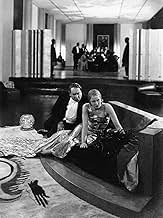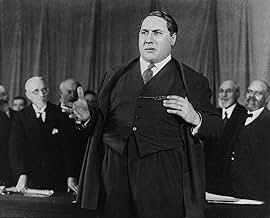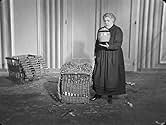L'argent
- 1928
- 3 घं 15 मि
अपनी भाषा में प्लॉट जोड़ेंThe business tycoon Nicolas Saccard is nearly ruined by his rival Gunderman, when he tries to raise capital for his company. To push up the price of his stock, Saccard plans a publicity stun... सभी पढ़ेंThe business tycoon Nicolas Saccard is nearly ruined by his rival Gunderman, when he tries to raise capital for his company. To push up the price of his stock, Saccard plans a publicity stunt involving the aviator Jacques Hamelin flying across the Atlantic to Guyana and drilling ... सभी पढ़ेंThe business tycoon Nicolas Saccard is nearly ruined by his rival Gunderman, when he tries to raise capital for his company. To push up the price of his stock, Saccard plans a publicity stunt involving the aviator Jacques Hamelin flying across the Atlantic to Guyana and drilling for oil there, much to the dismay of Hamelin's wife Line. While Hamelin is away, Saccard t... सभी पढ़ें
- निर्देशक
- लेखक
- स्टार
- Line Hamelin
- (as Mary Glory)
- Massias
- (as Al. Mihalesco)
- Daigremont
- (बिना क्रेडिट के)
फ़ीचर्ड समीक्षाएं
Films about the financial system (not necessarily about Wall street) are however nothing new. In 1928 Marcel L'Herbier adapted a novel of the same name by Emile Zola. The novel of Zola is situated in the second half of the 19th century but L'Herbier modernizes the story to the roaring twenties. Contrary to the above mentioned movies L'Herbier made his film before the crash of 1929.
By the way in 1983 Robert Bresson made a film of the same name. This is however not an adaptation of the same novel by Zola, but an adaptation of "The forged coupon" by Leo Tolstoy.
In "L'argent" there are two rival capitalists. The hot blooded predator Nicolas Saccard (played by Pierre Alcover) and the cold blooded reptile like Alphonse Gunderman (played by Alfred Abel). Neither of them is very sympathetic.
On top of these characters Brigitte Helm plays with baroness Sandorf a sort of "femme fatale" avant la lettre. Avant la lettre because the film noir would appear much later.
The storyline is not the best part of the movie. It is rather simple and is rushed in the last fifteen minutes. The storyline revolves around the slogan "Money is a faithfull servant but a terrible master". This combination of a quasi profound slogan and simple storyline reminded me of the slogan "Head and hands need a mediator. The mediator between head and hands must be the heart!" from "Metropolis" (1927, Fritz Lang) a year earlier. This is not the only link between the two films, because Alfred Abel and Brigitte Helm also played in "Metropolis".
The strong point of "L'argent" is not the storyline but the ambiance. With very innovative cinematograhy the film sketches the hectic, oppurtinistic and sometimes panicky atmosphere at the stock exchange. Tribute to cinematograhper Jules Kruger, who also made "Napoleon" (1927) with Abel Gance.
There is a match-cut from the engine of a plane to a madly spinning camera looking down from a ceiling that is perhaps the most impressive in the entire 30 years of cinema until then. And there is a lot of the camera choreographed to dance, or painting with our gaze incomplete motions across rooms.
Resnais would take all this thirty years later to revitalize French cinema.
Story-wise, it is about two puppet-masters vying for the control of the same world. The film begins on the level of the stage, the stockmarket, this new temple of the modern world devoted to capital, and pulls back to reveal who holds the strings, who re-invents the broadcasted reality.
Like Zen calligraphy, this is not about the painted signs on the scroll and what they mean, but the disciplined soul revealed by the flow of ink. Watch it like you would unfold a scroll, the ink is in the image.
The plot, taken from a novel by Emile Zola, about stock market speculation, is as timely as ever. Saccard, an unscrupulous banker, tries to manipulate the French stock market through speculation. He is opposed by another banker, Gunderman, who advocates caution and stability. After a brief downturn in his fortunes, Saccard uses a Lindbergh like aviator to try and return to the top. He also has designs on the aviator's wife. It all plays out at a massive dinner party which is the movie's major set piece.
The performances of the three male leads (Pierre Alcovar as Saccard, Alfred Abel as Gunderman, and Henry Victor as the aviator) are very good while the two female leads (Brigitte Helm and Mary Glory) are less so. This has more to do with their roles being underwritten then anything that the actresses do as performers. Poor Brigiite Helm as Baroness Sandorf seems little more than a stylish clotheshorse. All she does is pose and pout as a spoiled aristocrat. Mary Glory as the aviator's wife has a more substantial role.
This brings me to the biggest issue that I have with L'ARGENT. While not denying the film's reputation in some circles, I found it to be visually overdirected in the manner of L'Herbier's contemporary Abel Gance or in the later movies of Orson Welles or Stanley Kubrick. Many critics praise the film's non-linear visual style with its constantly moving camerawork and quick cut editing which are in effect throughout the 150 minute running time. However I find that these cinematic tricks get in the way of rather than enhance the story.
I first saw L'ARGENT in the 2009 Eureka Region 2 edition which ran 165 minutes. Although that version was the best one available then, this new 2019 Flicker Alley Blu-Ray surpasses it. In addition to having a better picture and tighter running time, it comes with a choice of 2 different orchestral soundtracks. Like the Eureka release it also comes with the remarkable documentary THE MAKING OF L'ARGENT also done in 1929. While it left me cold, L'ARGENT is an important film and an absolute must for lovers of silent cinema...For more reviews visit The Capsule Critic.
क्या आपको पता है
- ट्रिवियाThere are 1,952 shots in the film, with an average shot length of just six and a half seconds.
- इसके अलावा अन्य वर्जनThe film was shown to the French press in December 1928 in a cut lasting about 3 hours and 20 minutes, however by the time the film had its first public screening in January 1929, producer Jean Sapene had ordered the length to be cut by half, unbeknownst to director Marcel L'Herbier and much to his and fellow filmmaker Marcel Carné's dismay. Much later, the film was restored to a running time of 2 hours and 25 minutes.
- कनेक्शनFeatured in The Twentieth Century: The Movies Learn to Talk (1959)
टॉप पसंद
विवरण
- रिलीज़ की तारीख़
- कंट्री ऑफ़ ओरिजिन
- भाषाएं
- इस रूप में भी जाना जाता है
- Money
- फ़िल्माने की जगहें
- La Bourse, Paris 2, पेरिस, फ़्रांस(interior: shots from the ceiling covering the crowd movement of buying and selling orders)
- उत्पादन कंपनियां
- IMDbPro पर और कंपनी क्रेडिट देखें
बॉक्स ऑफ़िस
- बजट
- FRF 50,00,000(अनुमानित)
- चलने की अवधि
- 3 घं 15 मि(195 min)
- रंग
- ध्वनि मिश्रण
- पक्ष अनुपात
- 1.33 : 1

































